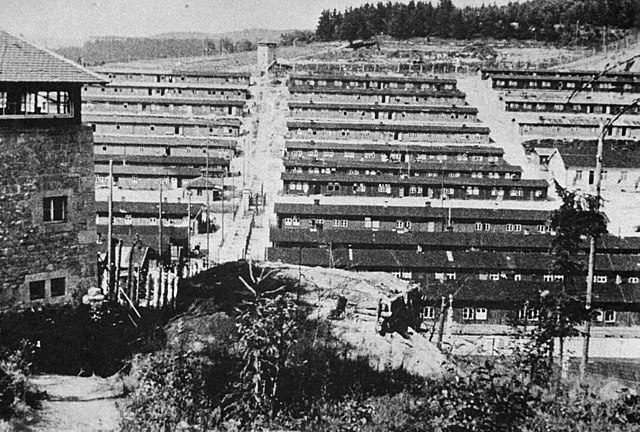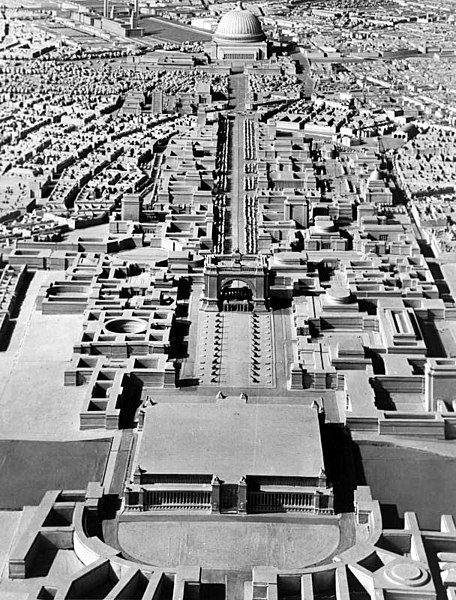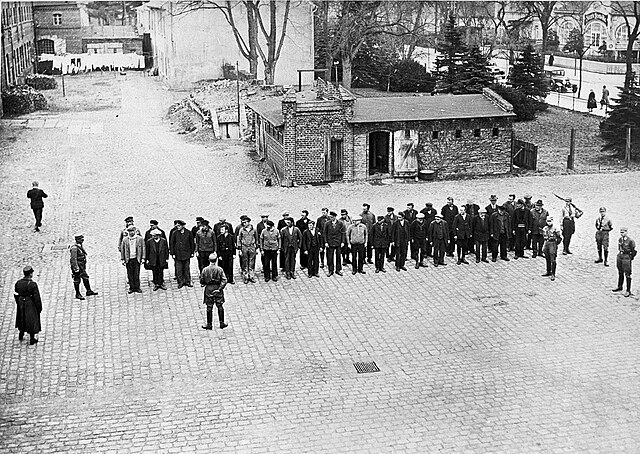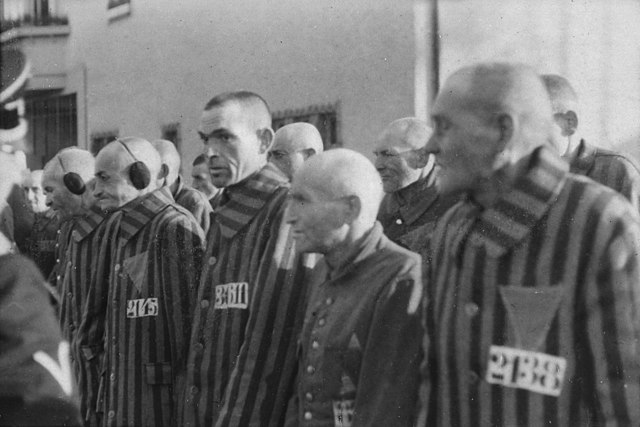Flossenbürg concentration camp
Flossenbürg was a Nazi concentration camp built in May 1938 by the SS Main Economic and Administrative Office. Unlike other concentration camps, it was located in a remote area, in the Fichtel Mountains of Bavaria, adjacent to the town of Flossenbürg and near the German border with Czechoslovakia. The camp's initial purpose was to exploit the forced labor of prisoners for the production of granite for Nazi architecture. In 1943, the bulk of prisoners switched to producing Messerschmitt Bf 109 fighter planes and other armaments for Germany's war effort. Although originally intended for "criminal" and "asocial" prisoners, after Germany's invasion of the Soviet Union, the camp's numbers swelled with political prisoners from outside Germany. It also developed an extensive subcamp system that eventually outgrew the main camp.
Flossenbürg concentration camp
Albert Speer's plan for Berlin
Gate of Flossenbürg with the Nazi slogan Arbeit macht frei ("Work sets you free")
Subcamps shown with pre–World War II and current Czech borders in medium gray and the Protectorate of Bohemia and Moravia in dark gray
From 1933 to 1945, Nazi Germany operated more than a thousand concentration camps, including subcamps on its own territory and in parts of German-occupied Europe.
Prisoners guarded by SA men line up in the yard of Oranienburg, 6 April 1933
Heinrich Himmler inspects Dachau on 8 May 1936.
Prisoners at Sachsenhausen, 19 December 1938
Forced labor at Sachsenhausen brickworks








